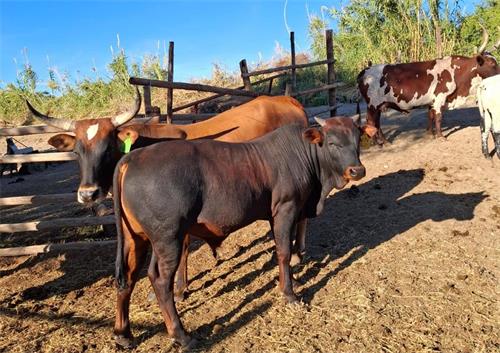As a dairy farmer or cattle vet, few things are more frustrating than seeing a good cow fail to conceive cycle after cycle. Sometimes, everything looks normal—good nutrition, strong heat signs, timed AI—and yet, pregnancy doesn’t happen. One of the most common hidden culprits? Endometritis.

Endometritis, or inflammation of the inner lining of the uterus, can sneak in quietly after calving and linger for weeks, silently interfering with fertility. Thankfully, with modern ultrasound technology, farms now have a practical, fast, and non-invasive way to detect it before it takes a toll on reproductive performance.
Let’s dive into how farms around the world are using ultrasound scans to detect endometritis in cows—and why it’s becoming a go-to method for improving herd fertility.
What Exactly Is Endometritis?
Endometritis is a uterine condition usually caused by bacterial contamination after calving. It’s surprisingly common, especially in high-producing dairy cows. While the uterus typically clears itself naturally after calving, sometimes the immune system doesn’t fully resolve inflammation. This can leave behind fluid, pus, or irregular tissue that keeps the uterus in a subclinical inflamed state.
What makes endometritis tricky is that many cows show no visible signs. They eat well, show heat, cycle on time, and even mount other cows. But when you check 30 or 60 days post-breeding—no pregnancy. That’s why early and accurate detection is key.
Why Use Ultrasound to Detect It?
Before ultrasound became more accessible on farms, diagnosing endometritis relied on vaginoscopy or uterine cytology. These are still useful tools, but they’re either invasive, require lab processing, or can miss subtle changes.
Ultrasound, especially real-time B-mode scanners, allows for direct visual assessment of the uterus. You can instantly check for fluid pockets, uterine wall thickening, pus, or delayed involution—all in a few minutes, without sedation or special prep.
Veterinarians in both developed and developing countries have embraced this technology because it’s practical, mobile, and highly effective. Even portable ultrasound machines now provide high-quality images that are sharp enough to spot mild inflammation or retained fluid.
What Does Endometritis Look Like on Ultrasound?
On a healthy postpartum scan, you’d expect to see a small, firm uterus with little to no fluid inside. The uterine horns should be symmetric, with well-defined walls and no echoic material in the lumen.
In cows with endometritis, ultrasound may reveal:
Anechoic or hypoechoic fluid: These black or dark areas inside the uterus suggest the presence of mucus, pus, or inflammatory secretions.
Floating debris or echogenic particles: These indicate infection-related materials.
Thickened uterine walls: Suggests chronic inflammation.
Delayed involution: The uterus appears larger or softer than expected for the postpartum day.
In subclinical cases, you might just see a thin lining of fluid or scattered echogenic particles—subtle, but significant enough to reduce fertility if left untreated.
When Should You Scan?
Most farmers and vets agree: timing is everything. The best window for scanning cows for endometritis is between 21 to 40 days postpartum. At this point, the uterus should be well on its way to complete involution. Any remaining fluid or abnormal texture becomes highly suspicious.
Another good moment for scanning is 7–10 days after artificial insemination (AI). This can reveal cows with delayed uterine clearance who might need treatment before the next breeding cycle.
On many farms in Europe and North America, routine postpartum checks with ultrasound have become a standard part of the reproductive protocol—just like checking ovaries or confirming pregnancies.
What Happens After Detection?
The beauty of early detection is that it opens the door to early intervention. If endometritis is caught during the routine scan, several treatment options exist:
Intrauterine antibiotics: Cephapirin is widely used and effective.
Prostaglandin injections: Stimulates uterine contractions and helps expel contents.
Hormonal therapy: Like GnRH or PGF2α depending on the reproductive stage.
After treatment, cows can usually be re-checked in 7 to 10 days. If the uterus is clear, they’re good candidates for insemination. Without scanning, these cows might have gone months without a diagnosis—wasting time, feed, and reproductive potential.
Why It Matters on Real Farms
Farms today are under pressure to maximize production and efficiency. Every open day for a dairy cow costs money—between $2 to $5 per day, depending on the herd. Missed heats, failed inseminations, or culling due to infertility directly impact the bottom line.
That’s why more producers in places like the U.S., Canada, Germany, and Australia are using ultrasound to make smarter breeding decisions. It’s not just a diagnostic tool—it’s a management asset.
In fact, a study published in the Journal of Dairy Science found that herds using regular postpartum ultrasound had up to 15% higher conception rates and reduced average days open compared to herds using only manual palpation or external heat observation.
Tips for Using Ultrasound to Detect Endometritis
Whether you’re a vet visiting multiple farms or a producer investing in your own scanner, here are a few practical tips:
Use a linear rectal probe: It provides the best resolution for reproductive structures.
Don’t skip training: Even experienced vets need practice to read subtle signs.
Track uterine involution trends: Comparing scans week-to-week can help identify outliers.
Always scan both horns: Sometimes fluid is trapped in one side only.
Document and review: Take snapshots or short clips to compare over time.
The Bigger Picture: Reproductive Success
Ultimately, ultrasound isn’t just about spotting problems—it’s about preventing them. By integrating regular uterine scans into herd routines, farms can:
Reduce the number of silent non-pregnant cows
Catch endometritis early before it disrupts the whole breeding calendar
Treat only when necessary, avoiding overuse of antibiotics
Make data-driven culling decisions based on uterine health history
As one Wisconsin-based vet put it: “If you can’t see it, you can’t manage it. Ultrasound lets us see what we’ve been guessing at for years.”
How Farms Around the World Are Adopting This
In New Zealand, dairy farms use compact ultrasound machines to assess uterine health on pasture, even during milking breaks. In South America, large-scale beef operations rely on reproductive scanning programs to reduce cow-calf intervals. In parts of Asia, ultrasound training has become a key part of veterinary education to improve herd fertility outcomes.
The technology is no longer elite. It’s becoming essential.
Wrapping Up
Healthy reproduction drives healthy profits. And when it comes to catching endometritis—a sneaky, silent disruptor—nothing beats the power of ultrasound.
It’s fast. It’s accurate. It fits seamlessly into routine herd checks. And most importantly, it gives farmers the insights they need to keep their cows healthy, productive, and pregnant on time.
If your farm is still relying only on visual heat checks and calendar-based breeding schedules, it might be time to add an ultrasound scanner to your toolkit. The difference it makes in herd fertility is real—and it starts with a simple scan.
tags:
Text link:https://www.bxlultrasound.com/ns/863.html


